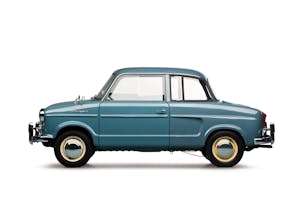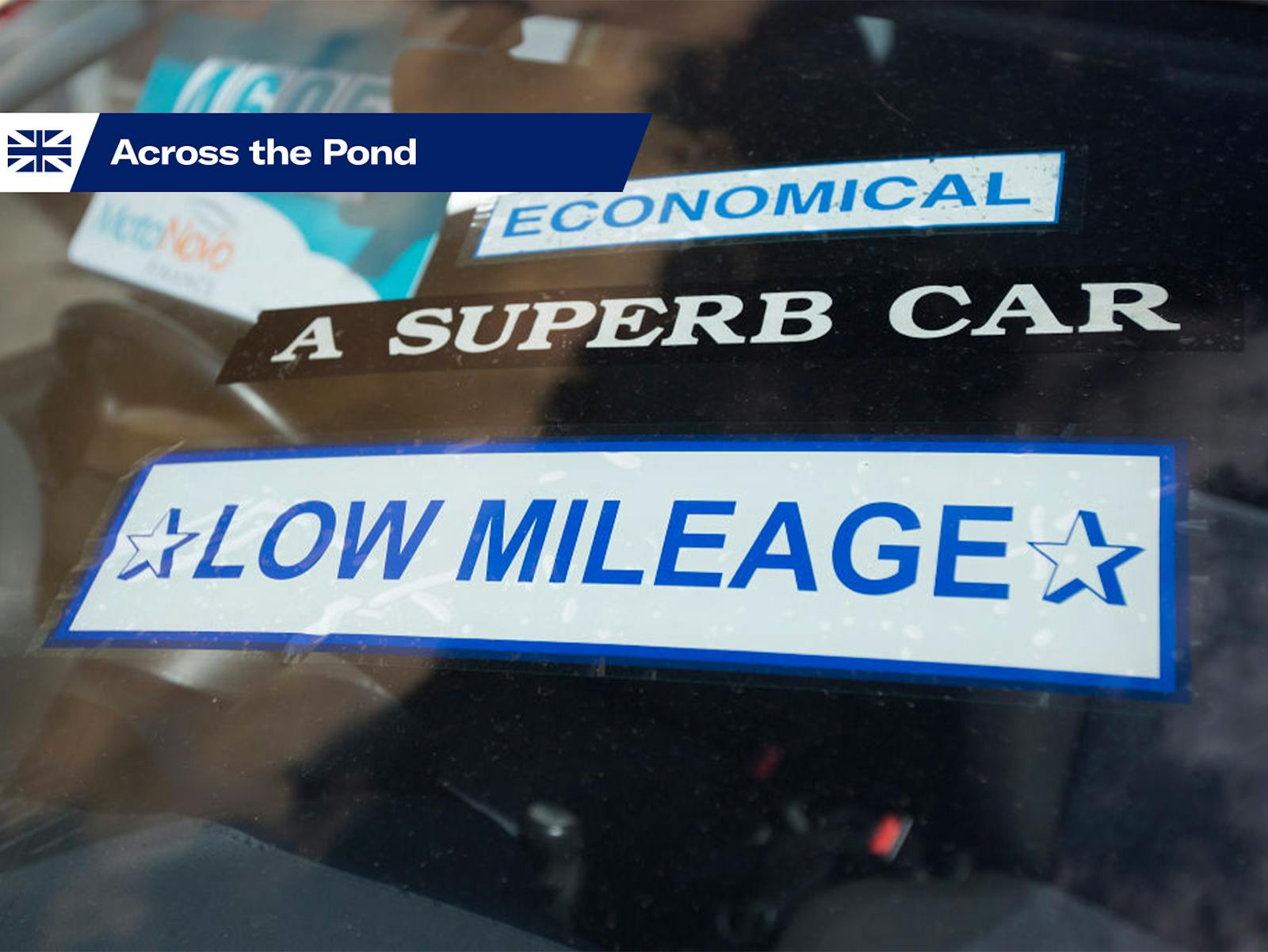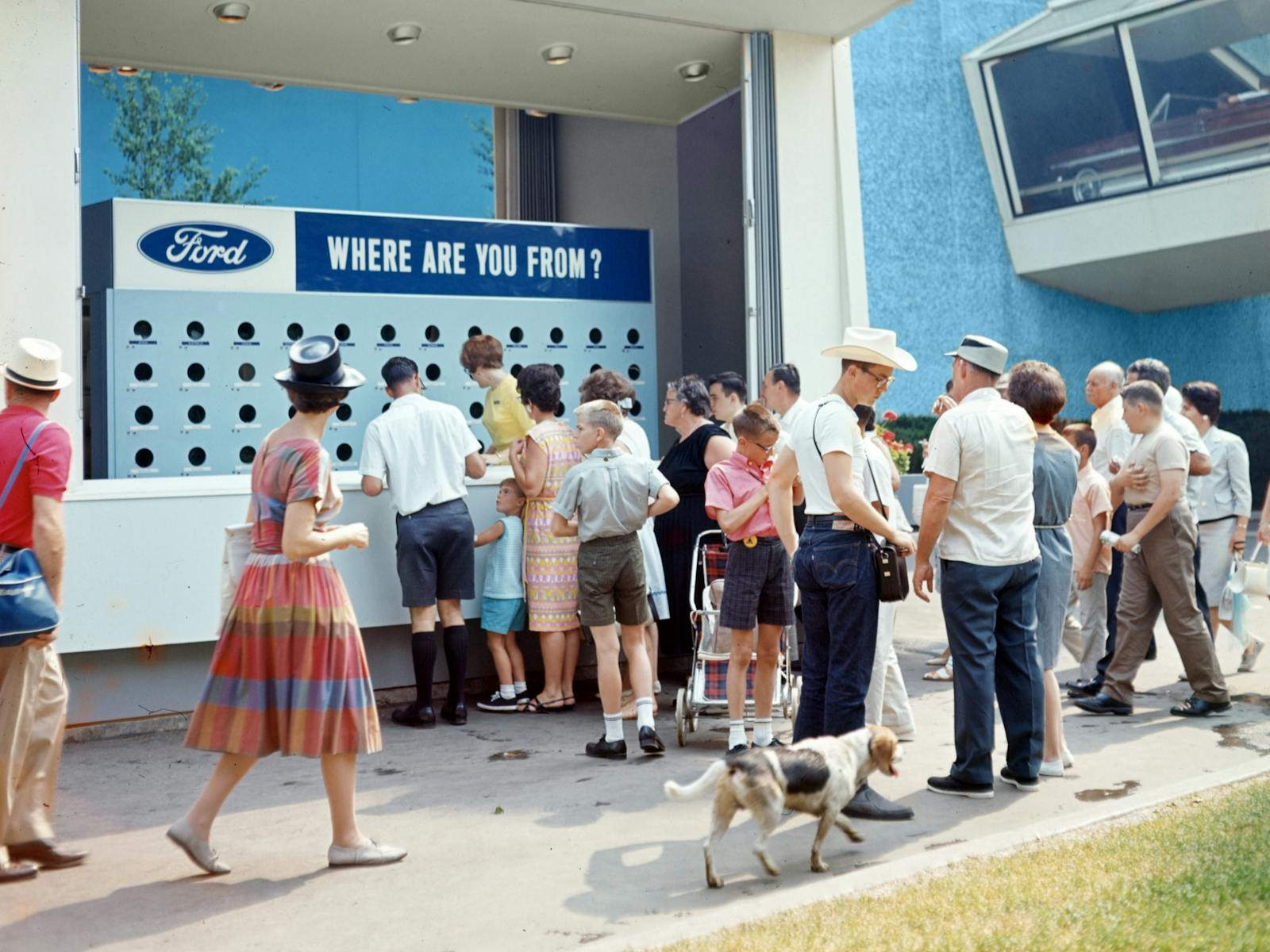7 forgotten German automakers
While Audi, BMW, Mercedes-Benz, and Volkswagen are now among the world’s most well-known brands, German automakers didn’t always rate highly among American consumers. They fared particularly badly, in fact, when they first appeared on U.S. shores in the mid-1950s; the microcars, subcompacts, and compacts the German marques offered were simply too small in the eyes of American consumers. In addition, many German manufacturers offered horizontally-opposed two-cylinder, two-stroke engines. At a time when stateside consumers preferred full-size cars packing powerful, overhead-valve V-8s, these unorthodox imports seemed barely more than glorified lawnmowers.
Here is a brief primer on 7 long-gone German automakers whose names, when mentioned today, typically result in blank stares. Use these fun facts the next time you want to impress your pals with your deep car knowledge.
Borgward

Founded in 1921 as an automotive radiator manufacturer, Borgward switched to building cars within a decade. After World War II, founder Carl Borgward split the company into three divisions—Borgward, Goliath, and Lloyd—to better secure rationed materials. The strategy worked: With help from some 500 U.S. dealers, and thanks to models such as the 1955 Isabella, Borgward became Germany’s second-largest automaker, right behind Volkswagen.
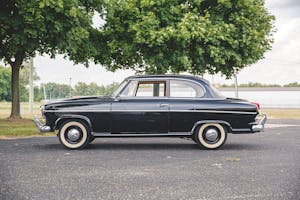
Unfortunately, the automaker’s American distributor ran into problems in 1960 just as technical issues with new models triggered production delays and recalls. When a story in Der Spiegel questioned Borgward’s financial health, dealers canceled more than 9000 orders. Carl Borgward had insisted on being chief engineer, designer, and chief financial officer; clearly, he had severely overcommitted himself.

Forced into receivership, BMW executives handled the bankruptcy graciously. By 1961, Borgward was history. BMW hired the unemployed engineers and Mercedes-Benz bought the factory, which it still uses today. Carl Borgward died only two years later at age 73.
Goliath

Goliath was co-founded by Carl Borgward in 1928, and the utilitarian commercial vehicles and cars it built were anything but gargantuan. For 1950, Goliath introduced diminutive front-wheel-drive sedans and coupes all using a two-cylinder, two-stroke engine sending 26 hp through a four-speed manual transmission.
While Goliath’s sales numbers weren’t impressive, its influence in Germany far outweighed its production statistics. The 1950 Goliath GP700 was the first production car to use Bosch fuel injection, and its pontoon styling was soon copied by its larger German rivals, including Mercedes-Benz. Goliath used an unusual engine layout, mounting the GT700’s engine transversely atop the transmission—an arrangement that allowed for an unusually roomy cabin, despite the model’s 91-inch wheelbase. The space-efficiency of the GT700’s powertrain ensured that automakers around the globe would follow Goliath’s example. (Did someone say Mini?) Not every one of the GT700’s innovations was worth repeating, however: The gas tank was in the engine compartment.
Goliath collapsed as a result of Borgward’s bankruptcy in 1961.
Lloyd

Founded in 1906, Lloyd had evolved into Borgward’s budget-priced brand by 1950, and its pint-sized L/600 two-door found its way to America in 1956. Measuring a mere 137 inches long, the front-wheel-drive L/600 was powered by a 19-hp two-cylinder, two-stroke engine and a three-speed manual transmission. Lloyd also offered a rear-wheel-drive model that offered only the most basic features—it had no trunk and a flat rear window. The L/600 was revised and renamed the Alexander for 1958, decked out with such luxuries as roll-up side windows, adjustable seat backs, and a trunk lid.

The marque disappeared along with Borgward. Never beloved by its customers, Lloyd’s penny-pinching nature inspired the phrase, “He who is not afraid of death drives a Lloyd.”

Goggomobil

Though founded in 1883 as a manufacturer of farming equipment, Hans Glas GmbH began producing its Goggo motor scooter in 1951 when interest in motorized transportation outstripped demand for farming equipment. The Goggo scooter led to the development of the rear-wheel-drive Goggomobil, which was named after the the company president’s nephew Goggi. Arriving stateside in 1955, the three-box design featured rear-hinged doors and was joined by a coupe in 1958 as well as a delivery van. Engines developed up to 20 hp, so reaching 60 mph required patience … and roughly 30 seconds. In 1959, Goggomobil introduced the larger T700 Royal sedan, a more conventional front-engined, rear-wheel-drive car with an air-cooled, horizontally-opposed two-cylinder engine that generated 30 hp.
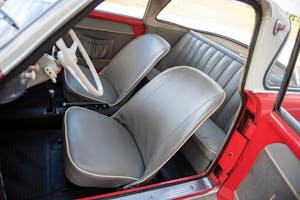
Goggomobil would become the largest-selling microcar brand in Germany, building more than 280,000 units total. Imports to the U.S. ceased in 1961, although production continued through 1969.

Glas

As Hans Glas found success with Goggomobil, his company moved upmarket, fielding the larger Glas 1300 and 1700 sedans and coupes stateside from 1963 through 1968. Powered by overhead-cam, four-cylinder engines with up to 98 hp, the 1700 and 1700 GT coupe styled by Frua are Glas’s most well-known offerings today, together with a Frua-styled Glas V-8 2+2 coupe with 148 hp. However, by 1966, the company had run into financial problems and was eventually acquired by BMW.

Goggomobil production continued, while Glas 1300 and 1700 GTs wore BMW badges and a twin-kidney grille. The V-8 2+2 model gained BMW’s 157-hp, 3.0-liter V-8 and was nicknamed the “Glaserati” due its resemblance to contemporary Maseratis—which wasn’t entirely a coincidence, since Frua designed cars for both marques. The final Glas left the factory in 1968. BMW built a new factory on the Dingolfing site, and it remains the company’s largest today.

DKW
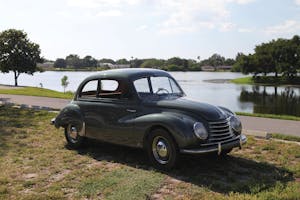
A manufacturer of steam vehicles and motorcycles, Dampf-Kraft-Wagen (which translates to “steam-powered wagon”) built its first gas-powered car in 1928. In 1932, it joined Auto Union along with Audi, Horch, and Wanderer. As Auto Union’s high-volume manufacturer, DKW served up low-priced, economical transportation for the masses. After WWII, Auto Union settled in Ingolstadt, producing subcompacts and compacts with—you guessed it—two-stroke, two- and three-cylinder engines, front-wheel drive, and the Auto Union four-ring badge (with each of the rings representing one of the four manufacturers).
On April Fools’ Day 1958, Daimler-Benz AG acquired 88 percent of Auto Union GmbH, and by 1960, Auto Union was a wholly-owned Daimler-Benz subsidiary. As styling was modernized and engines grew larger, DKW hung on until 1965. At that time, Auto Union was sold to Volkswagen, which in turn killed the brand and revived the Audi nameplate.
NSU

Having found success as a motorcycle manufacturer in 1901, NSU (the three letters plucked from Neckarsulm, Germany, where its plant was located), began building cars under license four years later. The marque waffled between cars and motorbikes through the 1930s and ’40s, but in 1958, finally committed to cars with the 1958 Prinz sedan and Sport Prinz two-seater, the latter of which was styled by Bertone. Power came from a rear-mounted, air-cooled two-cylinder engine mounted transversely in both vehicles. In 1964, NSU introduced the Wankel Spider, a two-seat convertible powered by Felix Wankel’s rotary engine and wearing Bertone sheetmetal. A front-wheel-drive luxury sedan, the Ro 80, reached America in 1969 and was by a twin-rotor Wankel. The engine’s reliability problems, however, cost NSU dearly, and it merged with Auto Union that same year. NSUs would be built through 1977.
